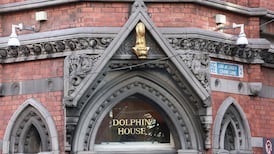A murder trial witness told gardaí she was "80 per cent sure" that a man she saw walking along a country road "sweating and red-faced" on the morning Bobby Ryan went missing matched a photo she later saw of the deceased DJ.
Another witness said he was “almost certain” he saw the deceased’s van driving on a road away from where it would be found later that day.
Siobhán Kinnane told David Humphries BL for the prosecution that she lives at Cordangan, a townland close to Fawnagowan where Mr Ryan’s body was found two years after he disappeared.
On the morning of June 3rd 2011, the last time he was seen, Ms Kinnane was driving her children to school at about 8.50am when she saw a man walking by the side of the road near her home. He was bald and wearing a navy or dark-coloured tracksuit. He didn’t make eye contact with her and she found this peculiar. She was looking at him waiting for him to look up but he didn’t.
Under cross examination, she agreed with Lorcan Staines SC for the defence that in a statement she made to gardaí in June 2011 she described the man as “sweating and red-faced” and when gardaí showed her a photo of the deceased she said the man she saw didn’t look “athletically built” but also wasn’t “extremely fat” like the man in the photograph. However, she was “80 per cent sure” that a different photo she saw of Mr Ryan on the RTÉ website was the same person she saw that morning.
Farmer Patrick Quirke (50) of Breanshamore, Co Tipperary has pleaded not guilty Mr Ryan's murder on a date between June 3rd 2011 and April 2013 and is on trial at the Central Criminal Court. Mr Ryan's body was found in a run-off tank on the farm leased by the accused at Fawnagown, Tipperary in April 2013.
The prosecution claims that Mr Quirke murdered Mr Ryan, a part-time DJ known as "Mr Moonlight", so that he could get back with the deceased's girlfriend Mary Lowry (52) with whom the accused had previously had an affair.
Ms Lowry has previously described the affair with Mr Quirke as “seedy” and gave evidence that Mr Ryan left her home at about 6.30am on the morning of his disappearance.
Bus driver Jim Cully told defence counsel Bernard Condon SC that he gave a statement to gardaí two days after Mr Ryan went missing.
In his statement he said he was “almost certain” he saw the deceased’s van driving towards Dundrum village from the direction of Annacarty at about 8.40am that morning.
The witness was familiar with Mr Ryan’s van and the “Mr Moonlight” sticker across the front windscreen. He said he could not clearly see the driver but whoever was driving saluted him with his right hand and he saluted back. He thought it was Mr Ryan, he said, but he couldn’t say for certain.
Other witnesses said they saw a van similar to Mr Ryan’s at the car park leading to Kilshane Woods where it was found later that day by Mr Ryan’s daughter Michelle.
Eddie Hogg told Mr Humphries he walks his dogs through the woods every morning at about 8.15am and that morning noticed a maroon-coloured car and a white or silver van in the car park. He was shown a photograph of Mr Ryan’s van and said it was similar.
Michelle Lovelock told Mr Humphries that she arrived in the same car park to walk her dogs at about 8.10am and noticed a van that “bares resemblance” to Mr Ryan’s. She returned to the car park following her walk at about 8.50am and noticed the van was gone.
Catherine Costello of an organisation called Searching for the Missing said she got involved in efforts to find Mr Ryan after becoming aware that his family was “desperately seeking help” and it had been suggested he had died by suicide. She said she spoke to Ms Lowry who was pleasant and polite and also upset, dabbing her eyes with a tissue.
Ms Lowry later called Ms Costello and they arranged to meet again. This time Ms Lowry was “severely distressed” with tears flowing. She was so hysterical, Ms Costello said, that she was concerned about her ability to drive.
Ms Lowry told Ms Costello about her previous relationship with Mr Quirke and the witness told Ms Lowry she should go to gardaí.
The trial continues in front of Justice Eileen Creedon and a jury of six men and six women.








